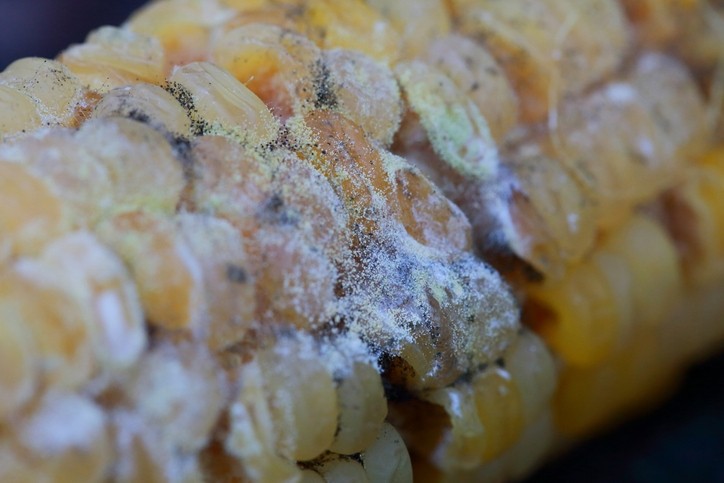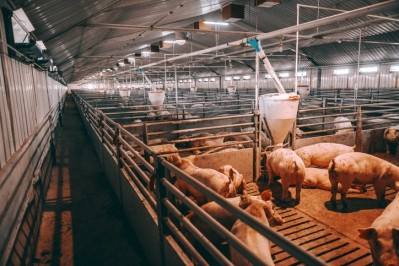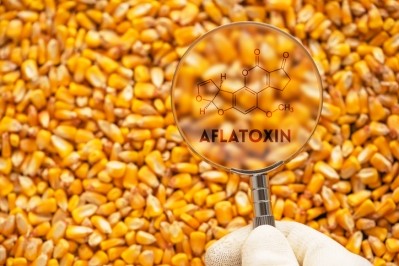Soil bacteria may provide key to detoxifying DON-contaminated feed

Fusarium disease in feed grains and crops like corn, wheat and barley continues to bring a challenge to growers and feed users, said Ting Zhou, research scientist with Agriculture and Agri-Food Canada (AAFC).
The disease can generate the mycotoxin, deoxynivalenol (DON), he said in a study about the research.
“Although the severity changes year-by-year it’s almost always there,” Zhou said referring to Fusarium related contamination. “Because of the climate changes or because … the pathogen population changes in the field, the disease is really getting worse instead of going away.”
The presence of DON in feed and feed grains presents a challenge for feed users as the toxin negatively affects animal performance, he said. “The swine industry is most sensitive to this issue,” he told us.
The particular mycotoxin has been a challenge for producers since the 1970s; however, there may be a new way to address the unwanted element in feed, he said. “We were thinking we needed something new, something innovative, so we started to [reflect on an idea] that maybe there might be something in nature that would detoxify these toxins.”
“Our hypothesis was that there was some kind of soil microbe that perhaps could destroy or detoxify these toxins,” he said.
The Canada-based research team identified the naturally occurring, soil bacterium, Devosia mutans, as a potential transformer of DON into a non-toxic form when environmental factors were involved including mild temperatures, neutral pH and aerobic conditions.
“We understand all the mechanics, but haven’t done much in the field,” Zhou said. “However, from the lab, our controlled conditions tests, this bacterial enzyme is very effective – they can basically completely transfer the DON into epi-3-DON by the end [and] in that case the toxicity is almost completely removed.”
Detoxifying DON-contaminated feed
The process of finding a soil-based bacterium able to detoxify DON involved the collection of hundreds of soil samples and adding moldy corn to the soil to generate larger populations of bacteria, said Zhou. Active bacteria then had to be screened.
“Once we had the single microbe, of course, there was a lot of work to make sure that this was a potential approach – we needed to identify what was the bacteria, because if it is a pathogen we can’t use it,” he said. “Then we tried to understand what the mode of action was, the mechanism – how this bacterium could transform the DON into another structure.”
The analysis showed that the bacterium, Devosia mutans, altered DON into two different forms - 3-keto-DON or epi-3-DON, he said. The new forms had to be checked to make sure they were less toxic than the original mycotoxin.
“We’ve done a lot of toxicity tests to evaluate the resulting products,” he said.
“The beauty of this bacteria is that they don’t need DON to survive on,” Zhou said.
The bacterium’s ability to generate the detoxifying enzymes, DepA and DepB, using another fuel source helps speed the transformation when it encounters the mycotoxin and may aid the commercialization process, he said. “You can just produce the enzymes,” he added.
Testing phase
Initial work with the bacterium and the enzymes produced looked at addressing post-harvest issues, said Zhou. The interest was in improving the use of contaminated grains.
Early testing explored applying the bacteria in a liquid feed setting, he said. “The feed would be basically mixed in a tank, and in that case, we could add the bacteria during the mixing [and] the toxins could be detoxified – that was one of our targets,” he added.
"The bacteria can detoxify under those liquid feeding conditions,” he said. “Although, we haven’t really done it on an industrial scale.”
There is also interest in testing the use of the bacterium or its enzymes in the corn starch production process and on the grain residue of the ethanol production process – before the material is dried to become DDGS, he said.
“If we could use our enzymes during the fermentation process, we may be able to reduce the mycotoxin levels before they enter into the DDGS; we can also use the bacterial enzyme before the drying of the byproduct.”
The detoxified grain has already been fed to mice, and tested with swine tissue, he said. But it has yet to be tested in vivo in farm animals.
Preharvest application
“We haven’t done much preharvest work because our original target was post-harvest use,” he said. “But, most recently, it seems like farmers are very interested about preharvest use, so we are working on the potential preharvest use.”
Potential preharvest applications could include seed treatments or adding the bacterium back into crop fields to protect crops, Zhou said.
The next step in the project is to establish a commercial partner to scale-up the testing and adapt it from lab trials to a more commercial form, he said.
“We’re looking for an industry partner at this moment to work with, to develop the different delivery technology and methodology and then the partner may be able to produce a commercial product for farmers – so that will be our next step,” he said.















